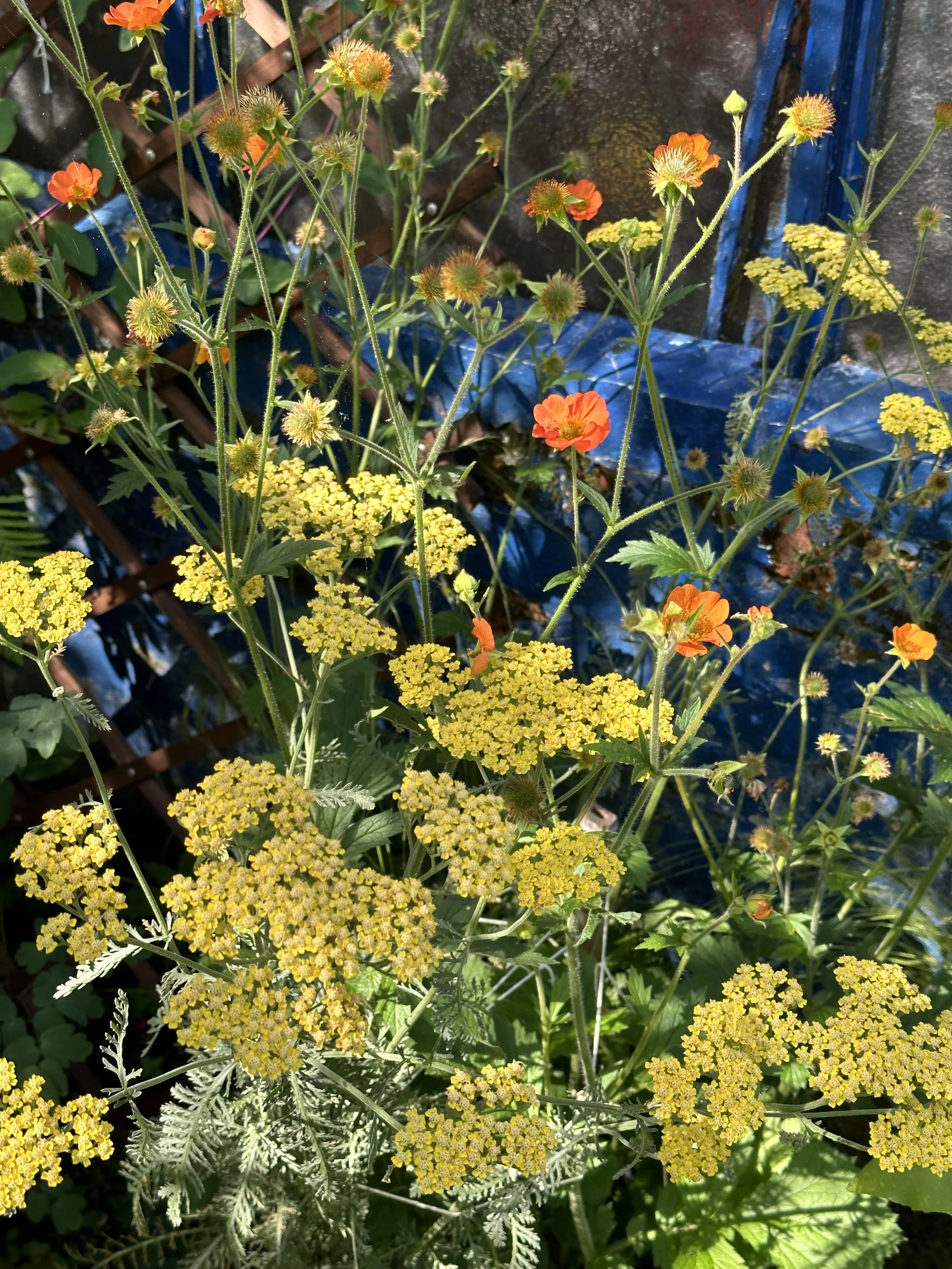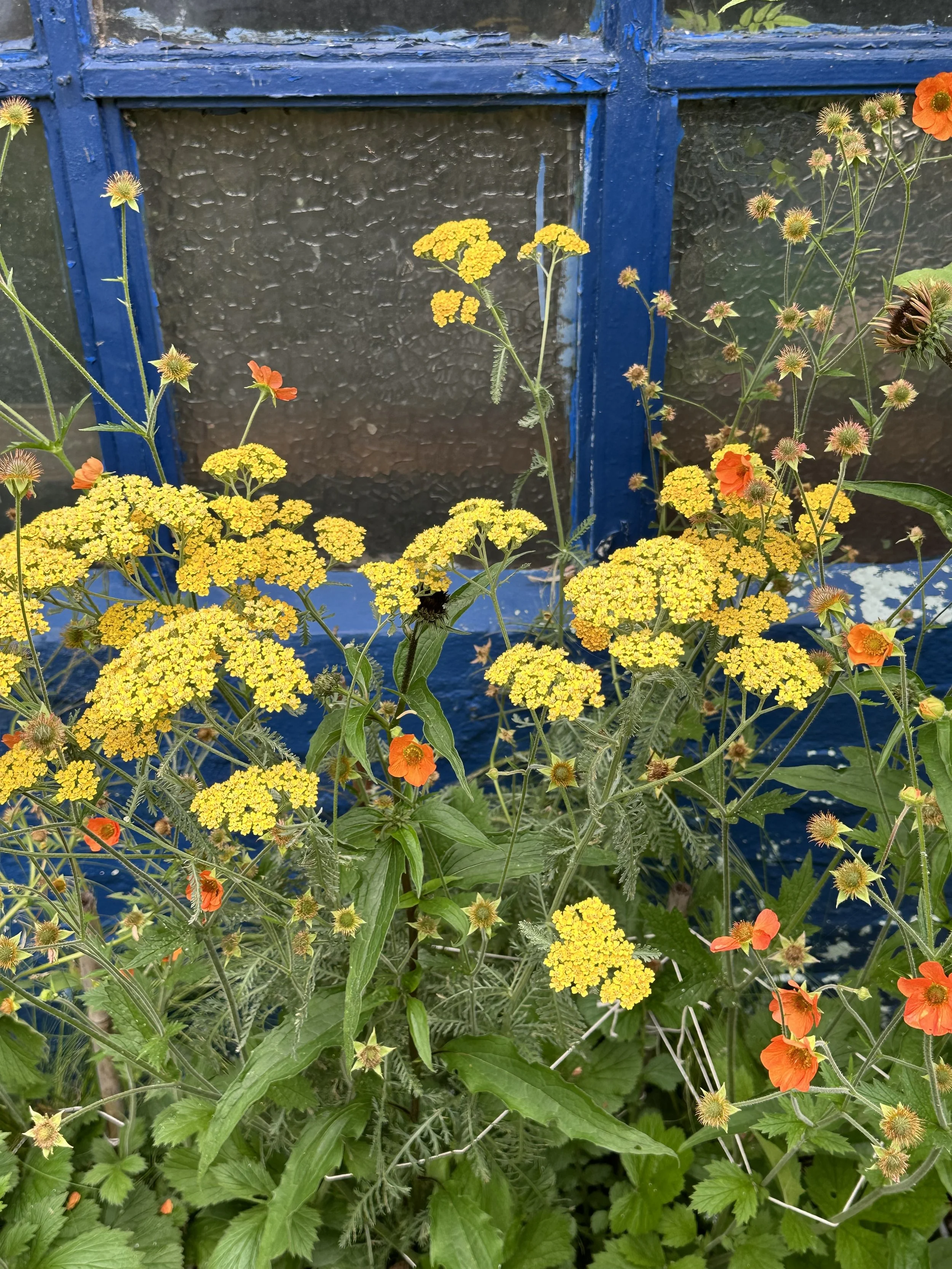Companion Planting Yarrow: Attracting Beneficial Insects
This article has links to products that I may make commission from.
Companion planting is one of the most ingenious gardening practices as it involves planting different species of plants together to enhance their growth and health, often eliminating the need to use pesticides.
It is based on the idea that certain plants can benefit each other by attracting beneficial insects, repelling pests, providing shade or support, or improving soil health.
Yarrow, or Achillea millefolium, is a popular companion plant for many reasons.
Companion planting yarrow can help promote a healthy ecosystem in your garden, as yarrow can help attract insects that are important predators of common garden pests like aphids and caterpillars.
Here we will explore the benefits of companion planting yarrow and how you can use it to attract beneficial insects to your garden.
To learn more about growing flowers as companion plants, check out my guides:
How to Pair Marigold Companion Plants
What is Yarrow?
Yarrow, also known as Achillea millefolium, is a herbaceous perennial plant that is native to temperate regions of the Northern Hemisphere.
Yarrow is known for its feathery leaves and delicate, flat-topped clusters of flowers that can be white, yellow, pink, or red.
It is a hardy and drought tolerant plant that can grow up to three feet tall and can be easily grown in most soil types and light conditions.
Yarrow is a great pick for west facing gardens and can be a wonderful plant for wildflower meadows and a great choice if you have chosen to turn your front yard into a wildflower meadow.
For more inspiration, check out my guides:
Companion Planting Yarrow
One of the main benefits of planting yarrow is that it attracts beneficial insects to your garden.
Yarrow flowers produce nectar and pollen, which attract pollinators such as bees and butterflies.
These insects are essential for the growth and development of many plants, including vegetables and fruit trees such as apple trees.
Here's how yarrow attracts pollinators:
Color:
Yarrow flowers come in a variety of colors, including white, pink, yellow, and red, which can attract different types of pollinators.
For example, bees are particularly attracted to yellow and white flowers, while butterflies tend to prefer pink and red flowers.
Shape:
Yarrow flowers are flat-topped and composed of many small florets, which provide a landing platform for pollinators.
The flowers also have a long blooming period, which provides a steady source of nectar and pollen for pollinators.
Fragrance:
Yarrow flowers have a sweet, spicy fragrance that can attract pollinators from a distance.
Habitat:
Yarrow is a hardy plant that can grow in a variety of habitats, from meadows and prairies to gardens and roadside ditches.
Want to learn more about the magic of companion planting?
Companion Plants for Cauliflower: Attracting Beneficial Insects
Does Yarrow Repel Pests in the Garden?
While yarrow itself does not have strong pest-repelling properties, it does attract a variety of beneficial insects that can help control garden pests and reduce or eliminate the need to use pesticides.
The flowers of the yarrow plant produce nectar, which attracts beneficial insects like ladybugs, hoverflies, and lacewings.
These insects are natural predators of common garden pests such as aphids, whiteflies, and caterpillars, which can damage or kill plants if left unchecked.
When yarrow is planted in proximity to other plants, it can help draw these beneficial insects to the area, which can reduce pest populations and promote a healthy ecosystem in the garden.
In addition to attracting beneficial insects, yarrow also has a strong root system that can help improve soil structure and fertility, making it a valuable addition to any garden.
Some gardeners believe that yarrow has a general repellent effect on pests due to its aromatic oils and bitter taste.
However, more research is needed to confirm this and to determine the specific pests that yarrow may repel.
For more companion planting ideas, check out my guides:
Top Companion Plants for Growing Juicy, Sweet Strawberries
Utilizing Nasturtium Companion Plants for Natural Pest Control
Yarrow Companion Plants
Yarrow makes an excellent companion plant for many plants in your garden.
The best companion plants for yarrow are:
Tomatoes
Yarrow can attract beneficial insects to the garden, which can include natural predators of tomato hornworms such as parasitic wasps and braconid wasps.
These insects lay their eggs on or inside tomato hornworms, which then hatch and feed on the pest, effectively controlling their population.
To learn more about growing tomatoes, check out my guides:
Grow Tomatoes Anywhere with Grow Bags
Are Coffee Grounds Good for Tomato Plants?
Here are the tomato seeds I recommend:
Peppers
Yarrow can also be a good companion for peppers because it attracts predatory insects like ladybugs, lacewings, and hoverflies, which feed on aphids that are a common pest of peppers.
Learn more about growing chili peppers with my guides:
The Art of Preserving Heat: How to Dry Chillies Perfectly
Growing Jalapeños in Pots: A Spicy Addition to Your Garden
Here are the pepper seeds I recommend:
Cabbage
Yarrow can attract parasitic wasps and braconid wasps to the garden, which are natural predators of cabbage moths and their larvae.
When yarrow is planted near cabbage and other Brassica crops, it can help attract these beneficial insects to the area, which can help control cabbage moth populations and reduce damage to the plants.
Additionally, some gardeners believe that the aromatic oils and bitter taste of yarrow may have a general repellent effect on pests, including cabbage moths, although more research is needed to confirm this.
Learn more about Growing Cabbages in Containers.
Here are the cabbage seeds I recommend:
Chamomile
Yarrow and chamomile are both members of the Asteraceae family and have similar growth habits and soil requirements.
Planting yarrow alongside chamomile can help support the growth of both plants and attract beneficial insects like hoverflies, which are important pollinators.
Learn more about chamomile in our guide Harvesting Chamomile: From Garden to Teacup.
My favorite chamomile seeds:
Herbs
Yarrow is a good companion for many aromatic herbs, including basil, oregano, and thyme.
It can attract beneficial insects like bees and parasitic wasps, which can help control pests.
To learn more about growing herbs, check out my guide:
Herbs That Can Be Planted Together: The Best Combinations
Here are my favorite basil seeds to grow:
Planting Yarrow
Yarrow plants prefer full sun and well-drained soil.
They are easy to grow and require minimal maintenance.
Here are few easy gardening tips for how to plant yarrow:
Choose a location:
Yarrow thrives in full sun and well-drained soil.
It can tolerate some light shade, but too much shade can cause the plant to become leggy and weak.
Choose a location in your garden that receives at least six hours of direct sunlight per day and has soil that drains well.
Prepare the soil:
Yarrow grows best in soil that is slightly alkaline (pH 6.0 to 8.0) and rich in organic matter.
If your soil is too acidic, you can add lime to raise the pH.
The best way to test your soil pH is with a simple soil tester:
If your potting soil is too heavy or poorly drained, you can add compost, sand, or perlite to improve drainage.
Plant:
You can plant yarrow seeds or transplants.
If you're planting seeds, sow them in the spring or fall, just barely covering them with soil.
If you're planting transplants, space them about 12 to 24 inches apart, depending on the variety.
Here is my favorite yarrow to grow:
Water:
Water the yarrow deeply after planting and then water it regularly.
However, make sure not to overwater, as yarrow doesn't like wet feet.
This is a great chance to use rainwater collected in a water butt.
Mulch:
Cover the soil around the yarrow with a layer of mulch to help retain moisture, suppress weeds, and regulate soil temperature.
Here is the mulch I recommend:
Prune:
Yarrow doesn't require much pruning, but you can deadhead spent blooms to encourage more flowers and prevent the plant from becoming too leggy.
Cut the entire plant back to the ground in the fall to prepare it for winter.
Growing Yarrow
Yarrow is a hardy plant that can tolerate a wide range of growing conditions.
However, it is susceptible to powdery mildew, especially in humid conditions.
To prevent powdery mildew, plant yarrow in a location with good air circulation and avoid overhead watering.
Yarrow as Soil Improver
Yarrow is also a nutrient-rich plant that can help improve the health of your soil.
When yarrow plants die back in the fall, they release nutrients into the soil, which can benefit other plants in your garden.
Soil Structure
Yarrow has deep roots that penetrate into the soil, helping to loosen compacted soil and improve its structure.
This allows for better water and nutrient absorption, as well as improved air circulation within the soil.
Nutrient Accumulation
Yarrow is a dynamic accumulator plant, which means it has the ability to absorb nutrients from the soil and store them in its tissues.
When the plant dies back or is cut back, these nutrients are released into the soil, improving soil fertility and providing nutrients for other plants in the area.
Organic Matter
As yarrow decomposes, it adds organic matter to the soil, which helps improve soil texture, water retention, and nutrient availability.
Wrap-Up
Companion planting yarrow is a natural and effective way to attract beneficial insects to your garden and promote a healthy ecosystem.
Yarrow's delicate flowers produce nectar that attracts a variety of beneficial insects, including ladybugs, hoverflies, and lacewings, which are natural predators of common garden pests.
In addition, yarrow can help improve soil structure, increase nutrient availability, and promote healthy plant growth.
By incorporating yarrow into your garden design, you can reduce the need for synthetic pesticides and fertilizers while promoting a more sustainable and natural approach to gardening.









































